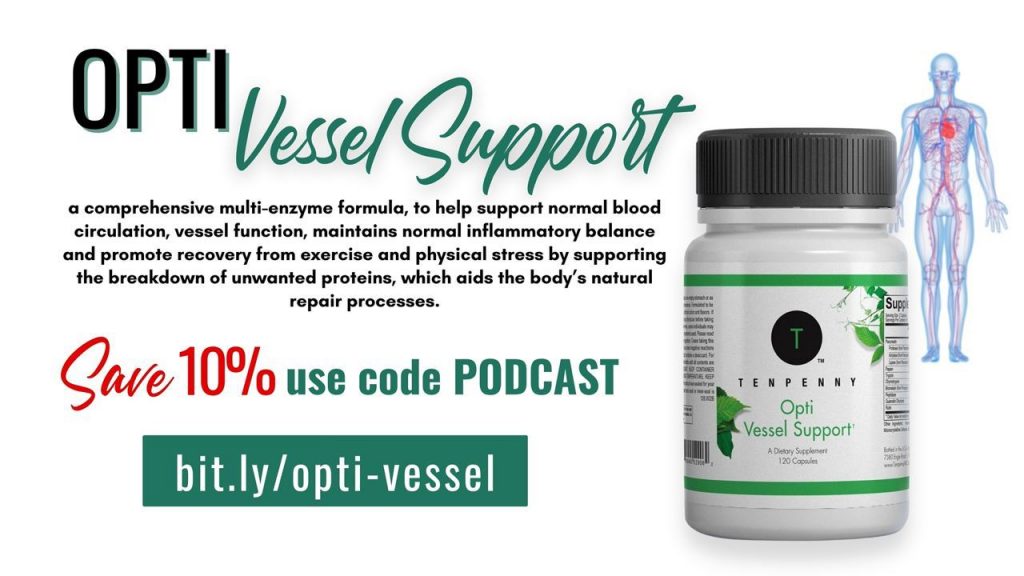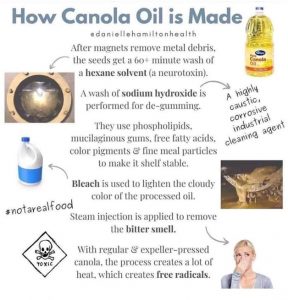In May 2018, I had the privilege of traveling to Germany. As we drove from Frankfurt north to Hanover and Bremen, we encountered spectacular countryside with pastoral fields of yellow blooms. What was this crop? It is not something I regularly saw in Texas.
It turns out that the crop is canola, or rapeseed as it is called in Europe. Rapeseed is planted in winter or spring, and shows off its beautiful and vibrant golden flowers in summertime. The plant is a close cousin to mustard, cauliflower and broccoli, all of which are in the cabbage (Brassica) family. Canada is the largest producer, with Germany as a close second. The culinary version of rapeseed is also called canola, a word literally derived from “Canada” and “oil”. The term canola is mainly used today in the US and Australia, with most countries still using “rapeseed” as the term.
 Rapeseed oil is widely used in food processing and cooking. Mainstream health articles tell us that rapeseed oil is healthy because it is high in healthy fats. The articles are quick to distinguish between culinary rapeseed oil and industrial rapeseed oil.
Rapeseed oil is widely used in food processing and cooking. Mainstream health articles tell us that rapeseed oil is healthy because it is high in healthy fats. The articles are quick to distinguish between culinary rapeseed oil and industrial rapeseed oil.
Industrial?
Yes, that’s right. Rapeseed oil was extensively used during World War II for ship building. When the US couldn’t get the oil from traditional suppliers in Europe and Asia, it turned to Canada for rapeseed oil. The Canadian market subsequently boomed, but plummeted after the war was over.

Shipbuilding in the Kaiser Shipyards during WWII.
Rapeseed oil is mainly grown for use in the automotive and chemical industries. The genetic makeup differs between the industrial and culinary versions; the version used in food has a much lower content of erucic acid which can be harmful to the body in high amounts. To be called canola oil, the crop must contain 2% or less erucic acid, a standard that is internationally regulated. Industrial versions have high (45% or more) erucic acid levels, which are associated with fibrotic lesions on the heart (Keshan’s disease.)
The two types also differ in their fatty acid profiles and presence of gluscosinolates, the sulfur-based compounds found in cruciferous vegetables and packed with vitamins, fiber and minerals.
The rapeseed crop yields about 40 percent oil, making it highly profitable for industrial use as compared with other crops like soybean which contain 18 percent oil. Rapeseed is primarily grown for its oil.
After the war, there was significant interest in repurposing rapeseed oil. The use of vegetable oil as cooking oil got it start with Procter and Gamble Company, which had vegetable oil as a byproduct of their soap making process. The vegetable oil was a toxic waste byproduct of this process. However, the company discovered they could hydrogenate the oil and pass it off as cooking oil. They hydrogenated the cottonseed oil byproduct of soap, and it wasn’t long before they began hydrogenating other oils like canola, soybean and sunflower oils, which soon hit the grocery store shelves. Fairly soon after that, paid scientists began praising these vegetable oils as healthier alternatives to animal-based saturated fats, like coconut oil and butter, that people had eaten for hundreds of years without any issues.
Canola oil is cheap to produce, and much money has been spent trying to convince you to think canola is a “health oil” so that consumers, restaurants, and institutions, will buy it as a main oil of choice. And they do – almost all processed foods use canola oil, as do many restaurants. Next time you go out to eat in a restaurant, ask the type of oil that they will use to prepare your food.
Most likely it will be canola oil.
Today, the mainstream media still describes canola oil as “heart healthy” and a good source of monounsaturated fats similar to olive oil. Unfortunately, much of what you hear in the mainstream media has been influenced by the heavy-handed marketing tactics of big food companies. Groups like the American Heart Association, numerous government agencies and major universities all promote polyunsaturated oils as a heart-healthy alternative to “artery-clogging” saturated fats.
 Fifty years ago, the inflammatory effects of consuming these oils became increasingly clear, with strong ties to cancer and heart disease. But the food industry pushed on because canola oil was so profitable.
Fifty years ago, the inflammatory effects of consuming these oils became increasingly clear, with strong ties to cancer and heart disease. But the food industry pushed on because canola oil was so profitable.
In order for canola oil to be marketed in the US, the FDA had to grant GRAS (generally regarded as safe) status, usually granted to foods with long-term safe use. Canola was a new product with an unproven track record. It was also derived from an industrial product with known toxic effects, so how did it get approved? Rumors abound that the Canadian government spent $50 million to get it approved. Pay to play. Even to this day, no long-term studies on humans have ever been done.
 Genetic Engineering and Toxic Processing
Genetic Engineering and Toxic Processing
The culinary version of rapeseed is derived from traditional methods of crossbreeding. Naturally, most varieties today, particularly in the US, have been genetically-modified (genetically modified organisms (GMOs) to be resistant to pests.
In 1995, canola was genetically engineered to introduce bacteria DNA to make it resistant to glyphosate, better known as the herbicide RoundUp. Today, the rapeseed plant has been so genetically modified that it significantly differs from the natural rapeseed plant – so much so that it has been patented by Bayer-Monsanto. The large majority – about 90% — of the world’s canola crop is now GMO. While organic canola farmers do try to farm non-GMO crops, canola is wind-pollenated and it is nearly impossible to keep the GMO pollen out of the organic crop.
Canola oil is far from healthy. It is high in both processed (not natural) monounsaturated and polyunsaturated fats. In highly processed oils, the polyunsaturated component of the oil becomes highly unstable when introduced to light or heat. This creates heavy oxidation, increasing free radicals in your body. This means these oils are highly inflammatory and contribute to heart disease and cancer. Conversely, olive oil that is cold pressed without the use of heat means healthy components.
Toxic petroleum products like hexane are used to process canola oil. Hexane is known to cause nerve damage. The end-to-end canola oil processing involves degumming, bleaching and deodorization. It’s disgusting.
 Both omega-3 and omega-6 are essential for health, but Western diets tend to be extremely high in omega-6 because of the many processed foods in the diet. The imbalance between the two can increase inflammation associated with heart disease, obesity and Alzheimer’s disease. The most healthy ratio is 1:1. The ratio in canola oil is 2:1, which isn’t so bad except that canola oil is in nearly every processed food, so the typical diet is thought to have a ratio of 15:1 on average.
Both omega-3 and omega-6 are essential for health, but Western diets tend to be extremely high in omega-6 because of the many processed foods in the diet. The imbalance between the two can increase inflammation associated with heart disease, obesity and Alzheimer’s disease. The most healthy ratio is 1:1. The ratio in canola oil is 2:1, which isn’t so bad except that canola oil is in nearly every processed food, so the typical diet is thought to have a ratio of 15:1 on average.
The high heat used during processing can actually transform the healthy omega-3 into trans fats, and the processed oil can actually deplete essential Vitamin E from the body. A 1996 Japanese study showed the canola diet killed lab animals; it was unpublished so Canadian scientists reproduced the results in piglets and another study was done as well, both confirming that vitamin E was depleted to dangerously low levels. Vitamin E controls lipid peroxidation which directly translates to the levels of free radicals in the body. Canola oil can also be detrimental to blood platelets.
The Bottom Line
Canola is not healthy. Despite the praises of low calories and nutritional benefits, canola has inflammatory properties. It is genetically engineered, has trans fats and toxic chemical residues. Choose a healthier alternative like extra virgin olive oil, coconut oil, or avocado oil. Your body will thank you.
++++++++++++++++++++++++++++++++++++++++++++++++++++++++++++++++++++++
 Like what you’re reading on The Tenpenny Report? Share this article with your friends. Help us grow.
Like what you’re reading on The Tenpenny Report? Share this article with your friends. Help us grow.
Get more of Dr. Tenpenny’s voice of reason at her website.
Join our list here
Make a donation here (and thank you!)
++++++++++++++++++++++++++++++++++++++++++++++++++++++++++++++++++++++
Fed Up Texas Chick is a contributing writer for The Tenpenny Report. She’s a rocket scientist turned writer, having worked in the space program for many years. She is a seasoned medical writer and researcher who is fighting for medical freedom for all of us through her work.

